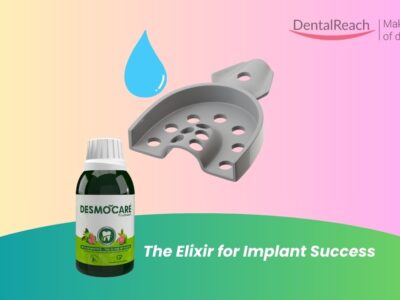Class II restorations are a common procedure in dental practice. The choice of material and technique significantly impacts the restoration’s durability, aesthetics, and overall success rate. This study evaluated these aspects by comparing two distinct approaches: using a flowable bulk-fill base covered with conventional viscosity material (Bulk-fill technique) versus employing only the conventional material in incremental layers (Layering technique)
The study was conducted as a split-mouth randomized clinical trial involving thirty patients. Each patient received two Class II restorations, resulting in a total of 60 restorations. The procedures were standardized as follows:
- Adhesive Application: A universal self-etching adhesive system was applied according to the manufacturer’s instructions.
- Matrix System: A sectional matrix, wooden wedge, and separation ring were used to ensure proper contour and contact.
- Restoration Techniques:
- Bulk-Fill Technique: 4 mm of flowable bulk-fill material was placed as a base layer, followed by 2 mm of conventional viscosity restorative material.
- Layering Technique: Conventional viscosity material was applied in increments no thicker than 2 mm until the cavity was filled.
- Finishing Touches: All restorations underwent occlusal adjustment and polishing using the same system.
Evaluations based on FDI criteria were performed at intervals of 7 days, 12 months, and 24 months post-restoration.
Results
Out of the initial thirty participants, twenty-four attended the final recall at 24 months, allowing for an evaluation of forty-eight restorations. The findings were summarized as follows:
- Aesthetic Properties: Both groups maintained acceptable aesthetic scores throughout the evaluation period.
- Biological Properties: No adverse biological reactions were observed in either group.
- Functional Properties: A small percentage (6.66%) exhibited unacceptable functional scores; however, this was consistent across both groups.
Statistical analysis using Fisher’s Exact test revealed no significant differences between the two techniques concerning any assessed FDI criteria. The overall success rate after two years stood at an impressive 93.33% for both methods. Both flowable bulk-fill base and conventional layering ORMOCER-based materials demonstrated excellent clinical performance over a two-year period with no significant differences between them.
This indicates that flowable bulk-fill ORMOCER-based materials can be considered a viable alternative for direct Class II restorations due to their ability to simplify procedures while delivering comparable outcomes.
For dental practitioners seeking efficient yet reliable solutions for Class II restorations, incorporating flowable bulk-fill ORMOCER-based materials offers several advantages:
- A simplified application process reduces chair time.
- Comparable aesthetic and functional outcomes to traditional layering techniques.
- High success rates affirming long-term reliability.
Dental professionals can confidently adopt either approach based on specific case requirements or personal preference without fearing diminished results.
Source: International Journal of Dentistry




















Comments